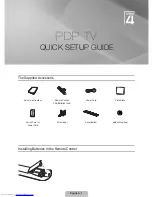
11
5. Use the following unsoldering technique
a. Allow the soldering iron tip to reach normal temperature. (500
o
F to 600
o
F)
b. Heating the component lead until the solder melts.
c. Quickly draw the melted solder with an anti-static, suction-type solder
removal device with solder braid.
CAUTION:
Work quickly to avoid overheating the circuit board printed foil.
6. Use the following unsoldering technique
a.
Allow the soldering iron tip to reach normal temperature. (500
o
F to 600
o
F)
b.
First, hold the soldering iron tip and solder the strand against the
component lead until the solder melts.
c.
Quickly move the soldering iron tip to the junction of the component lead
and the printed circuit foil, and hold it there only until the solder flows onto
and around both the component lead and the foil.
CAUTION:
Work quickly to avoid overheating the circuit board printed foil.
d.
Closely inspect the solder area and remove any excess or splashed solder
with a small wire-bristle brush.
Removal /Replacement
Some chassis circuit boards have slotted holes (oblong) through which the IC leads
are inserted and then bent flat against the circuit foil. When holes are of slotted type,
the following technique should be used to remove and replace the IC. When working
with boards using the familiar round hole, use the standard technique as outlined.
Removal
De-solder and straighten each IC lead in one operation by gently prying up on the
lead with the soldering iron tip as the solder melts.
Draw away the melted solder with an anti-static suction-type solder removal device
(or with solder braid) before removing the IC.
Replacement
Carefully insert the replacement IC in the circuit board.
Carefully bend each IC lead against the circuit foil pad and solder it.
Clean the soldered areas with a small wire-bristle brush. (It is not necessary to
reapply acrylic coating to the areas).












































